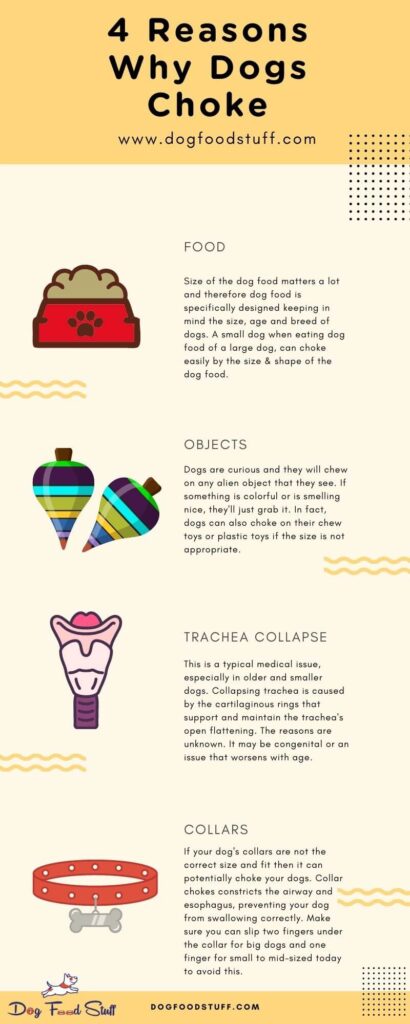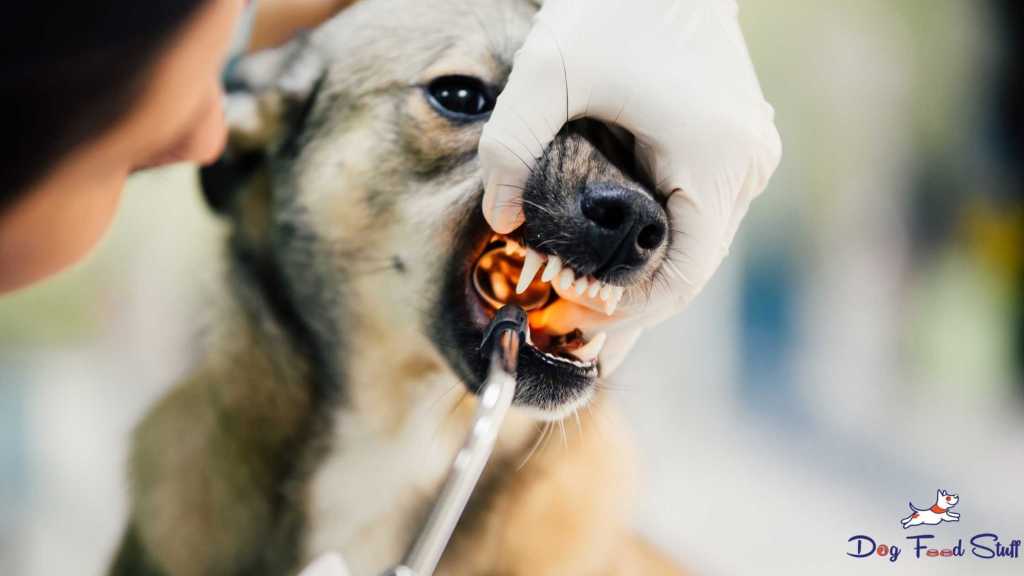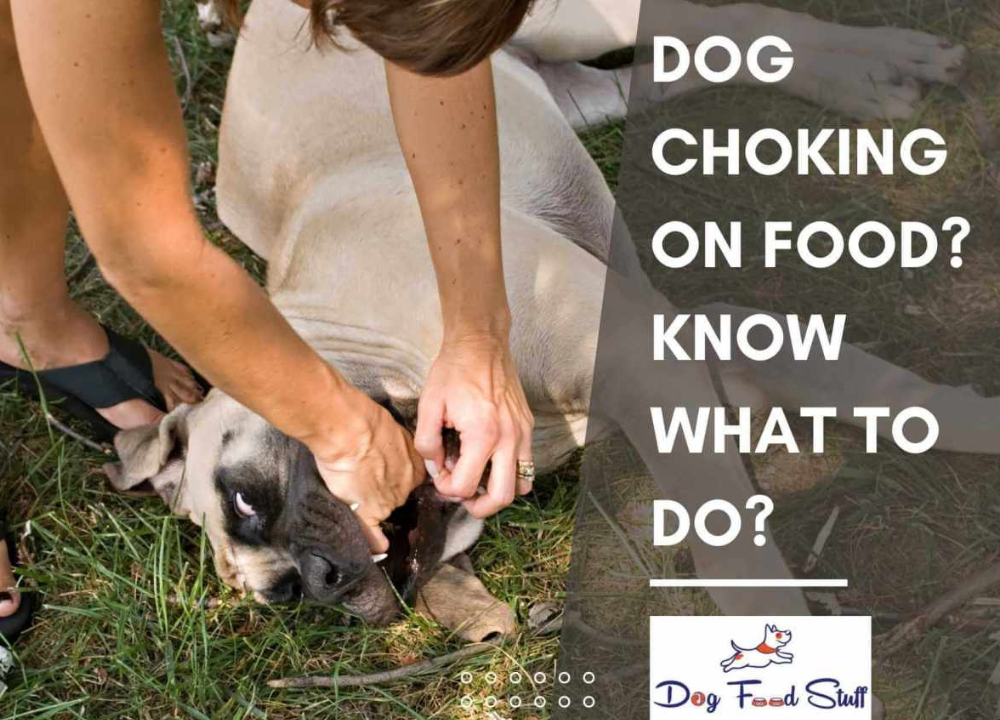Know What to Do: Dog Choking on Food Emergency Guide
Your first repsonse to dog choking on food
Is your dog choking on food? As a Dog parent, we tend to panic, right! Know the first response in case you find your dog choking on food.
There are few medical catastrophes that Dog parents fear, dog choking on food is one of them. You may only have a few minutes to respond to save your dog from choking to death.
The signals that your dog is choking can be heartbreaking, making it much more difficult to decide what to do. Understanding what to do if your dog is choking on food is extremely important for every Dog parent.
As terrifying as this scenario may be, panicking will not help your dog. It will simply aggravate him further as he picks up on your anxiety.
This article will cover what to do if dog is choking on food, the probable causes, how to prevent it and what to do after your dog chokes.
To Begin With
Dogs have a reputation for chewing on almost anything they come across, whether edible or not. Regrettably, not all foods are suitable for your pet’s jaws to grow round. Some may be too tiny for him to adequately chew, causing them to fall down his throat and become caught in the airway.
Other meals may break apart while being eaten, resulting in tiny fragments that might cause choking. Choking is a fairly frequent condition that affects our canine companions.
However, understanding what to do if your dog is choking on food and how to react is critical if your pet is to recover completely & quickly.
The more you understand how to assist your pet, the more relaxed and prepared you will be.
What causes choking in dogs?
There are several reasons for a dog to choke, which may be difficult to avoid. There are a few things to keep an eye out for. The following are some of the most prevalent reasons for choking in dogs:
1. Food
Dog choking on food is also very common. Therefore, most dog diets are designed for dogs of a specific size.
If you have a tiny dog and a huge dog, the little dog may choke on the food of the larger dog. It’s great if you can keep an eye on what they’re consuming and chewing on.
In fact, most human foods that you give your dogs has to be carefully monitored and always given in appropriate sizes.
2. Objects
Dogs are curious animals. Anything around them interest and this is arguably the most important issue you should be concerned about. They are always smelling and mouthing items in their surroundings.
In fact, it’s not just alien objects around them. They can also choke on their chew toys or other items they regularly play with. Anything smaller than their windpipe is a choking danger.
To keep your dog from choking, keep any chew toys that are too small away from them. Moreover, keep an eye on them when playing with their toys.
3. Trachea Collapse
This is a typical medical issue, especially in older and smaller dogs. Collapsing trachea is caused by the cartilaginous rings that support and maintain the trachea’s open flattening. The reasons are unknown. It may be congenital or an issue that worsens with age.
The Heimlich technique may not be effective in a collapsing trachea because the organ is collapsing on its own.
Whether your dog’s airway is also blocked, the treatment can still save his life. Giving him rescue breaths, as indicated below, may also be beneficial.
4. Collars with Constriction
Another item that might cause your dog to choke is a tight collar. The issue isn’t so much that the collar chokes your dog but that it constricts the airway and esophagus, preventing your dog from swallowing correctly.
They may swallow food into their trachea rather than their esophagus, suffocating your dog.
Make sure you can slip two fingers under the collar for big dogs and one finger for small to mid-sized today to avoid this.

How can I tell if my dog is choking?
Contrary to common opinion, it is not always clear if a pet is choking. If your dog makes noises while choking, this is a positive sign since it implies that his airway is only partially obstructed, allowing some air to get around.
When choking other dogs make no sounds at all. Rather, you may see your pet retching, paving rapidly back and forth, and pawing at her lips.
Even though he doesn’t look to be breathing, you can see his chest quickly heaving.
What should you do if your dog chokes?
You can’t wait to get across to the vet if your dog displays indications of choking; you ought to treat him right away. This is what you should dog if you find dog choking on food or any object:
1. Take a look at the dog’s mouth
Examine your dog’s mouth to see if you can find out what’s prompting him to choke. To obtain a good look at the back of her throat, you might have to draw him tongue forwards.
If you can see the bit of food causing the obstruction and can safely remove it, do so, but be careful not to push it farther down her airway.
Even if the obstruction is moist, slippery, and hard to obtain, never use a tool to try to remove the food. This might harm her mouth, throat, or airway, and if you drop it down her throat, you’ll further obstruct her airway.
If you can’t see the piece of good clogging dog airway or can’t get it out, try hitting him between the shoulder blades with the flat part of your palm first. This may help to break up the obstruction.
If that doesn’t work, you’ll need to conduct a procedure known as the canine Heimlich Manoeuvre, which should remove it.
2. The small dog Heimlich Manoeuvre
Although, of their tiny bodies, doing the Heimlich Manoeuvre on small dogs is more difficult, but the premise remains the same. To do the Heimlich Manoeuvre on a small dog, follow these steps:
✓ Turn your dog upside down by picking him up. This is sometimes enough for him to cough out the lodged item.
✓ You may also smack your dog four or five times on the back while he’s in the wheelbarrow posture. This can sometimes aid in the removal of the trapped object.
✓ Sit down and place your dog in your lap if neither method works.
✓ Insets of four or five, apply pressure beneath his ribs in fast, strong spurts up and toward his head.
✓ According to how tiny your dog is, your dog can make this motion with both hands clasped together or with just one hand.
✓ Check his mouth once again and try to get the thing out.
✓ Repeat as needed until the trapped object is released.
Some owners prefer a modified version of the large dog Heimlich, in which they hold their little dog against their chest. Moreover, apply pressure to his stomach.

3. The Large Dog Heimlich Manoeuvre
The Heimlich Manoeuvre is easiest to conduct on larger breeds since their size allows you to simulate how the technique is performed on humans. To use the procedure on a big dog, follow these steps:
✓ Walk behind your dog and grip his rear paws, lifting them. This is sometimes all that’s required to get your dog to cough up whatever he’s choking on.
✓ You may also smack your dog four or five times on the back while he’s in the wheelbarrow posture. This can sometimes aid in the removal of the trapped object.
✓ Wrap your arms around your pet’s waist if neither the wheelbarrow posture nor the back slaps work after a few seconds.
✓ Grasp his ribs with your hands.
✓ Pull your clasped hands upward through your belly, aiming towards the head. This will push air upwards, attempting to free the trapped item. Squeeze four or five times in succession, keeping your actions strong and steady.
✓ Examine your dog’s throat for the item and, if feasible, sweep it away.
If the object remains trapped, return to your dog’s side and repeat the compressions if required. Rep the method until you’ve freed the item and your dog can breathe normally again.
Are the above techniques enough?
Even if you have successfully removed the foreign item that was obstructing your dog’s airway and breathing normally, you should still take him to your veterinarian for a checkup. If your dog is unconscious, you should take him to an emergency veterinarian.
You should always take him that day or the next day for thorough veterinary treatment to ensure nothing was gravely injured.
Some foreign items might have harmed your dog even if you are not aware of them. If the trachea or other sections of your dog’s oral cavity get infected or fail to heal correctly, it can lead to additional complications.
How can you keep your dog from choking?
Puppies choke more frequently than adult dogs because they’re learning and engaging with new stuff. There are certain actions you can take to make sure that all of your pets are as secure as possible:
✓ Keep tiny objects out of reach of dogs.
✓ When the dogs are playing or eating, keep an eye on them.
✓ Make sure their toys don’t have any breakable parts.
✓ Choose toys appropriate for your dog’s size, age, and chewing habits.
✓ Avoid Rawhide and bones.
Sign up for pet first aid training if you want extra experience with pet CPR or the Heimlich technique to help you feel more confident in an emergency.
Accidents happen, and following these procedures will prepare you to assist your dog if he chokes.
Important Tips to prevent dogs choking on food?

The first thing is providing specific dog food tailored for his or her size. If possible, keep an eye on your dog as he eats. He may easily inhale a chunk of food if he eats too quickly.
A slow-feeder dog food dish can help prevent this, but it’s also a good idea to keep an eye on him as he eats.
The second thing is to remove anything that might be choking danger. Chew toys and bones are examples of this.
You’ll also want to make sure that the toys you provide your dog are durable and can endure this gnawing. This will keep them from shattering into tiny bits that might get stuck in your dog’s throat.
Summing-Up
Nothing is more terrifying for a dog owner than seeing their dog choking on food or any object, and not being able to save them.
In most circumstances, you won’t be able to get him to an emergency clinic in time to save him. That’s why knowing what to do might help you relax.
It’s also crucial to keep potential choking danger out of your dog’s environment. That way, you won’t have to deal with any first-aid situations. If he exhibits indications of choking, it’s great to be prepared so you don’t worry. It can also assist your best buddy while in distress.
The first response should be to look into your dog’s mouth to find any obstructions and carefully removing it. Remember, force is not the solution here. You can also try the the Canine Heimlich Manoeuvre technique if you’ve got some training it it.
Post first-aid, always see your Vet to find out any probable injuries or left overs.

